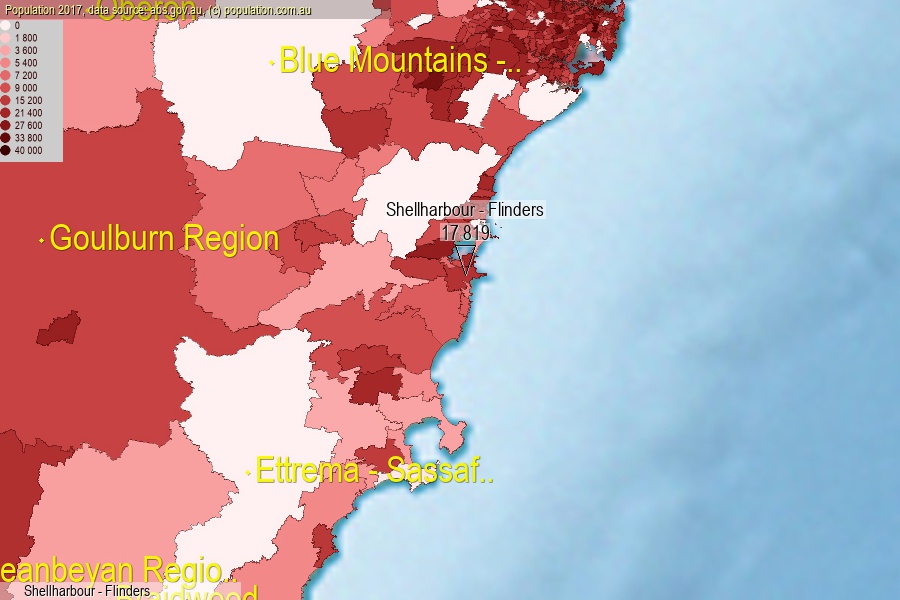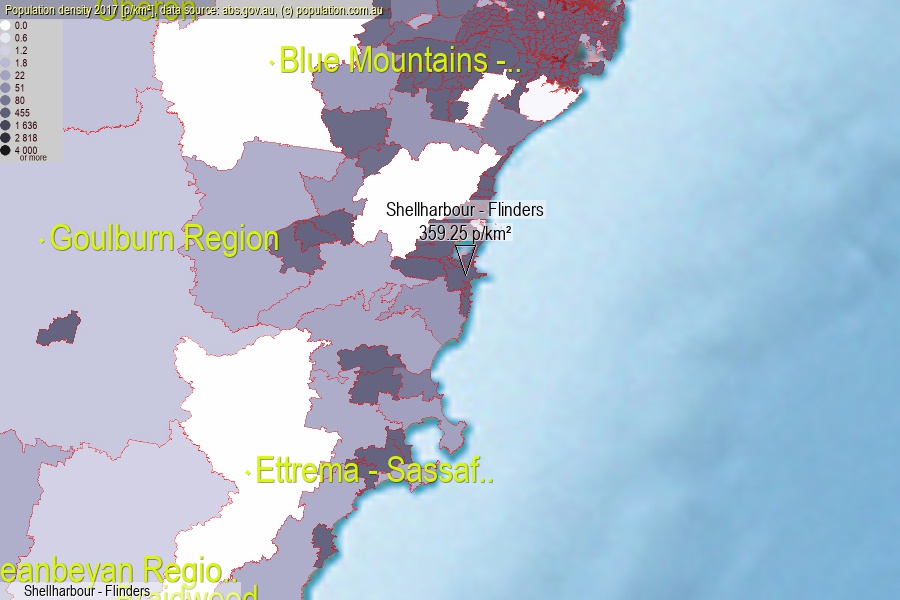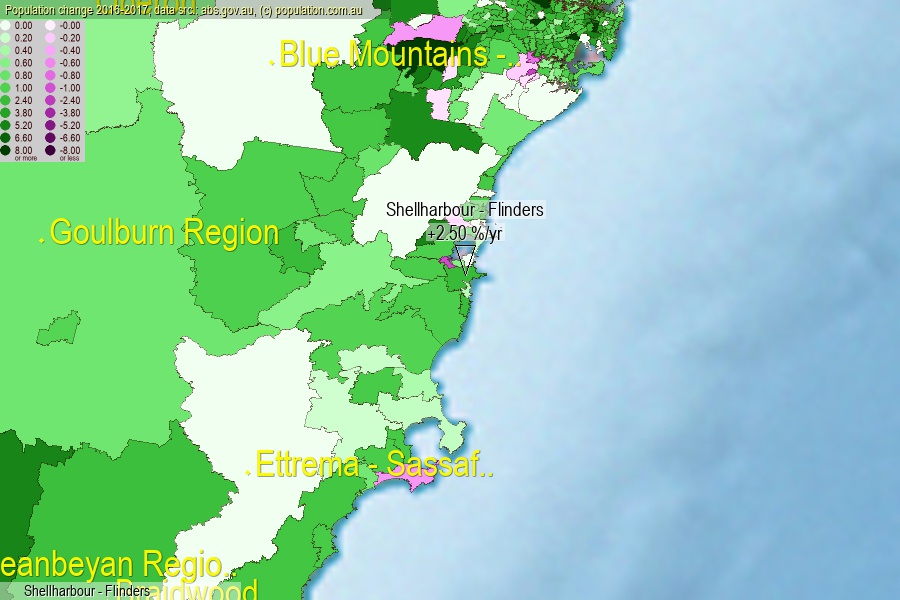 population.com.au
population.com.auLast official estimated population of Shellharbour - Flinders (as Statistical Area Level 2) was 17 819 people (on 2017-06-30)[2]. This was 0.07% of total Australian population and 0.224% of NSW population. Area of Shellharbour - Flinders is 49.60 km², in this year population density was 359.25 p/km² . If population growth rate would be same as in period 2016-2017 (+2.5%/yr), Shellharbour - Flinders population in 2025 would be 21 715. [0]



Click to enlarge. Shellharbour - Flinders is located in the center of the images.
Population [people], population density [p./km²] and population change [%/year] [2]
View borders » (new window) [4]
[1991-1992] +6.47 %/Yr.
[1992-1993] +9.06 %/Yr.
[1993-1994] +4.63 %/Yr.
[1994-1995] +4.10 %/Yr.
[1995-1996] +7.03 %/Yr.
[1996-1997] +7.67 %/Yr.
[1997-1998] +9.02 %/Yr.
[1998-1999] +7.96 %/Yr.
[1999-2000] +8.69 %/Yr.
[2000-2001] +6.68 %/Yr.
[2001-2002] +10.48 %/Yr.
[2002-2003] +9.66 %/Yr.
[2003-2004] +5.55 %/Yr.
[2004-2005] +5.81 %/Yr.
[2005-2006] +4.44 %/Yr.
[2006-2007] +5.63 %/Yr.
[2007-2008] +5.89 %/Yr.
[2008-2009] +3.49 %/Yr.
[2009-2010] +2.97 %/Yr.
[2010-2011] +2.38 %/Yr.
[2011-2012] +3.44 %/Yr.
[2012-2013] +4.50 %/Yr.
[2013-2014] +5.37 %/Yr.
[2014-2015] +4.05 %/Yr.
[2015-2016] +4.46 %/Yr.
[2016-2017] +2.50 %/Yr.
[0] Calculated with linear interpolation from officially estimated population
[1] Read more about SA2 and Australian Statistical Geography Standard (ASGS) on abs.gov.au
[2] Population data from Australian Bureau of Statistics (Population and density: 2017; change: 2016-2017)
[3] Digital Boundaries: Australian Statistical Geography Standard (ASGS) 2016.
[4] Border coordinates are simplifyed using Ramer-Douglas-Peucker algorithm.